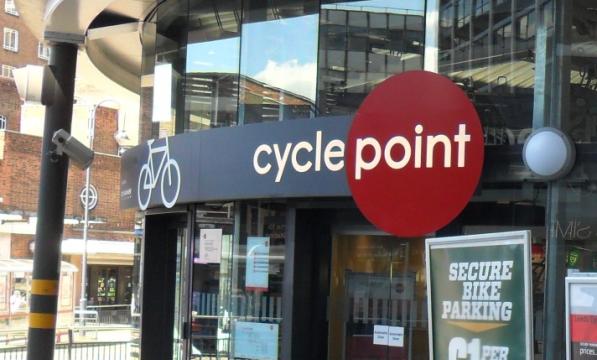Cycling and rail

Headline Message
Who benefits from combining cycling with rail travel?
- Individuals: it provides a door-to-door alternative to driving for longer-distance journeys.
- Commuters: can cut total daily journey time by up to one hour by cycling to and from the station, avoiding congestion and additional bus or inner-city rail journeys.
- Holiday makers and day visitors: cycle holidays/tours in the UK are growing in popularity, and travelling somewhere different for a cycle ride is an attractive option for a day out.
- Rail operators: it increases customers' ability to access rail services, with 60% of people living less than a 15 minute cycle ride from a station. It is also a lot less costly to provide cycle parking than space for cars.
- Local economies: the increased cachment area helps keep branch line services running, further reducing the need for car journeys.
- Public policy: it encourages more peole to take up cycling and lowers car travel, supporting a wide range of health, transport, social and environmental objectives.
Policy Key Facts
Better Rail Stations report
In November 2009, Chris Green and Sir Peter Hall reported their findings on the state of England's rail stations to the then Secretary of State for Transport, Lord Adonis.
The Better Rail Stations report didn't make for pretty reading, but at least the ten worst stations received £50 million in funding to retrofit improvements. This came in addition to £14 million for cycle parking and ten 'Cycle Hubs' (offering cycle hire, repair services and secure parking) with the first appearing in Leeds as Cyclepoint - now up and running.
The report recommended that in future 'Cycle Hubs' be installed at all 91 of the biggest UK railway stations.
Another of the recommendations gave minimum standards for cycle parking at railway stations at 5% of the daily passenger level. This was a welcome and sensible suggestion, but many stations still fall well below this level - with only a few major stations (e.g. Oxford and Cambridge) meeting it. Yet cycling levels in Oxford and Cambridge are much higher than the average and cycle parking at these stations is under extreme pressure. We suggest that in locations with high cycling, stations need to cater to the potential demand rather than limit parking levels to the 5% standard.
Taking a cycle on a train
National Rail Enquiries supplies advice on taking your cycle with you on a train, plus information about each operator's cycle policy, i.e. restrictions, reservations etc. Look up the train company, then click on 'onboard facilities'.
Level crossings
When it comes to level crossings, cyclists need to be assured of at least two things: that they will get across safely; and that convenient crossing points are kept open or created. More on our level crossings page.
Cycling UK View
While there have been significant advances over the last few years as far as secure cycle parking at some stations is concerned (see Headline Messages), combining rail and cycle travel could be made much easier in several ways. For instance, it should be made as easy as possible to:
- cycle safely to and from rail stations,
- wheel a cycle over bridges or through subways
- store a cycle securely and conveniently at all stations
- hire a cycle from a station, wherever practicable
- find information about taking a cycle with you on a train
- reserve a cycle space on a train, if required
- and, importantly, to take it on the train itself.
2012-02-29 00:00:00 Europe/London

